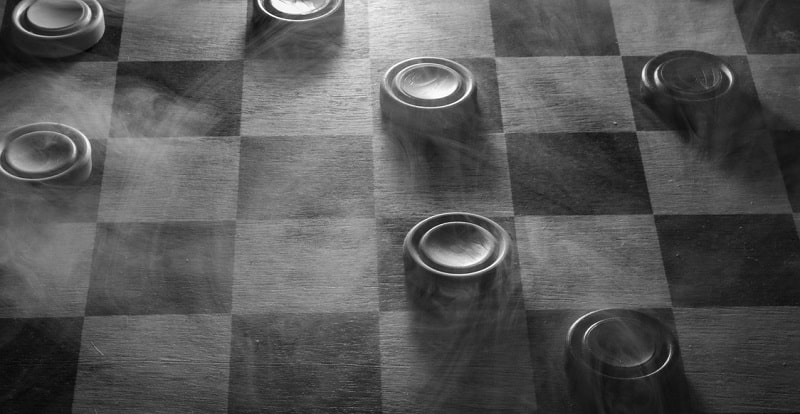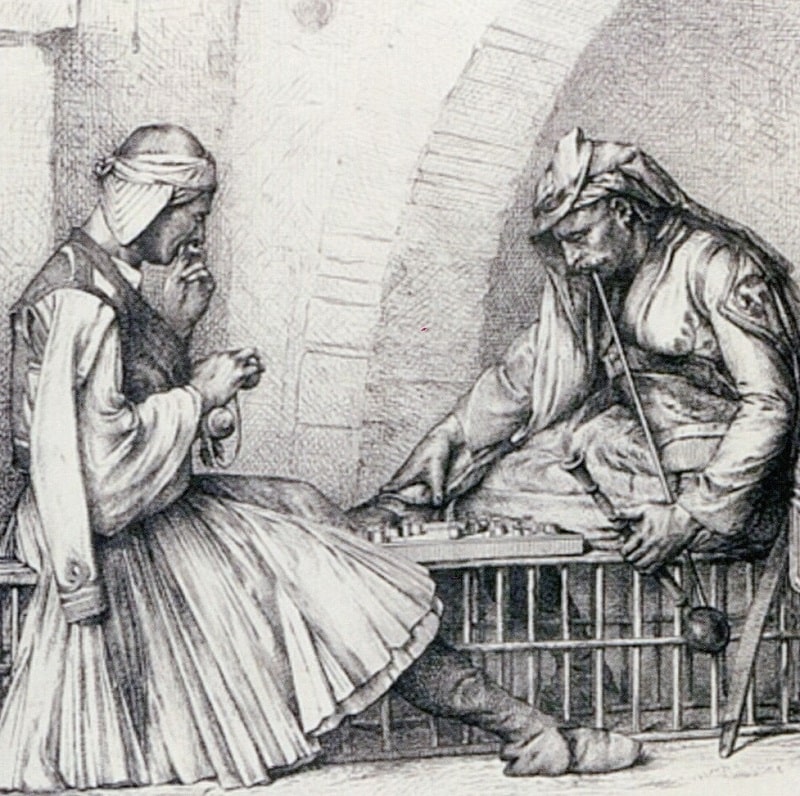Draughts is a game that has been around since time immemorial. Even the pharaohs played them. Egyptians believed that Thoth, the god of wisdom, invented draughts. Hellenists, on the other hand, believed it was Hermes.
1600 BC is believed to be the year in which the game was first mentioned. During excavations, archaeologists found a board with identical counters. They are considered to be proof that draughts were played as far back as the time of the pharaohs. Moreover, images with the players depicted at the ancient “draughts” board have been found. Specialists have called this game “Egyptian draughts”. It was popular among the poor and the nobility, including the pharaohs. It was played even on the ground, if there was no “draughts” board. For this purpose simply drew a grid on the ground by hand.
Ancient draughts were played all over the world, including in Hellas, Lydia and Phrygia. A popular game in the Roman Empire was ‘latrunculi’. Its name is derived from the word “latro”. Literally it means a hired soldier or warrior. Latrunkuli is considered the ancestor of modern draughts in Europe. Even folklore, literature and the writings of ancient scholars from Rome and Greece mention such games.
Alkerk, believed to be the ancestor of the game of draughts, originated on the island of Mauritius. Each player had 12 pieces. An opponent’s piece was taken by ‘jumping’ over the opponent’s piece. The Moorish game was distinguished by the fact that pieces were placed in places where lines on a playing board intersected. Checkers pieces were placed in cells the same way as in chess. From the same game was taken diagonal moving pieces. After all, in chess the queen moves in this way. Because of the similarity of movement of pieces in the two games Englishmen from some parts of the country for the name of checkers use the word draughts, which means a move chess queen.

Checkers is a type of checkers. The name of the game comes from the word checked. It is used for the game board in chess. The word checkers spread to all countries with English-speaking people thanks to the Pilgrims who came to North America from Albion.
Draughts grew in popularity worldwide slower than other board games. Harold Murray came to this conclusion after studying the history of their emergence and spread. He found only a few mentions of draughts in the historical period from the XII to the XVI century. Murray therefore concluded that the game was popular in these centuries exclusively in England and France. It may still have been widespread in Spain, as it is believed that the first manual on the game of draughts appeared in this country in 1547. However, contemporaries will not be able to get acquainted with it because it has not survived.
From the twelfth to the sixteenth century, the Church forbade many games but there is no such information regarding draughts. Murray believes that the game’s popularity in Europe began to increase in the 16th century. In the first half of this century there was a new rule in draughts – it is necessary to beat the opponent’s chip if there is such an opportunity.
Adam Mickiewicz was fond of checkers and Napoleon preferred them. In the 19th century draughts competitions at the national level were organised. International championships were organised only after the invention of draughts with a playing area of 100 cells. With this variant the French were familiar since the beginning of the XVIII century. This time is considered the period of the French draughts which later became an international game.
Unofficial international championships in draughts were held in the late XIX and early XX century. In 1947, the World Draughts Federation was founded. This enabled the first official international competitions in draughts to be held in 1948. Since the mid-1950s, the title of draughts champion was continuously fought between the Dutch and Soviet players.
Now the headquarters of the World Draughts Federation is in Estonia. Today the game is popular in Asian, African, European countries and in America. There are separate draughts championships in Europe for veterans, women and young men. They are organized by European Draughts Confederation. This is another organization of international level. There are also separate continental draughts championships.

